|
|
ADDRESS AT THE INAUGURATION OF THE RESEARCH CENTRE OF SUN PHARMACEUTICAL INDUSTRIES LTD., VADODARA
14-12-2004 : Vadodara
MOLECULE TO DRUG : CHALLENGES
I am delighted to participate in the inauguration of the New Research Centre of Sun Pharmaceutical Industries Ltd. My greetings to the organizers, pharmaceutical technologists, chemists, doctors, academicians, industrialists and distinguished guests.
With Sun Pharma?s experience in the field of providing healthcare solutions particularly in the area of cardiology, neurology, psychiatry and gastroenterology, the Sun Pharma Advanced Research Centre (SPARC) will have potential to design and develop molecular entities for respiratory and inflammatory disorder. I am happy to know that you are entering into the field of new drug delivery system and wish you all the best in your efforts for success in the new drug delivery system that are undergoing human trials.
Convergence of technology
The interfacing between medical science and various other technologies such as biotechnology, has given rise to numerous techniques both curative and investigative and has provided the research worker with numerous tools to pry into the working of various physiological functions right upto the molecular levels. Developments in bio-technology and molecular biology have now made it possible not only to design the drugs for specific properties but also to deliver them to the specific sites where they are most required. The onset of nano technology has further enhanced the capability of drug delivery system to reach the disease spot with precision.
Newer imaging techniques have now made it possible to obtain real time images of the various organs at a physiological and biological level and hence the right treatment is administered. Medical research will lead to identify not only the genes that cause disease but also correct the defects through gene therapy. Recent breakthroughs in stem cell research are likely to lead to the regeneration of diseased organs. The role of genes in heart diseases and stroke is now universally accepted. The apo-B gene is responsible for the cholesterol management in the body. My friend, Dr. B. Soma Raju informs me that as a clinician he is looking for two major approaches for gene therapy for heart diseases: treating the heart muscle itself and treating veins and arteries. Molecular biology will also have a clear impact on the science and practice of psychiatry in near future.
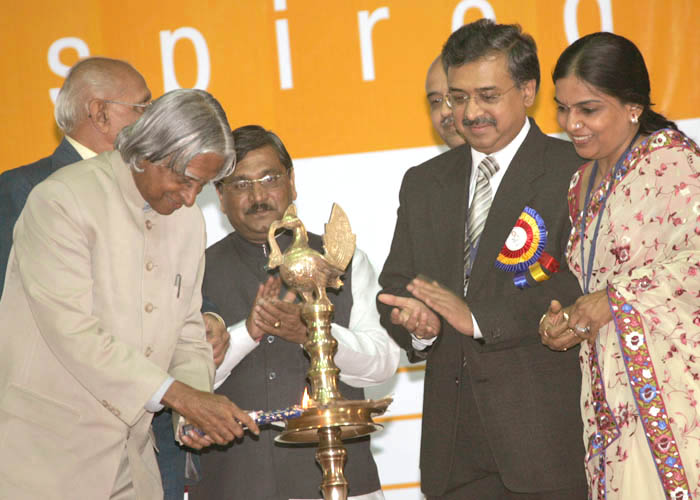

Molecule to drug
It is time that we develop a molecule to drug in the country. Scientific manpower is available in the country, but what we need is, to organize ourselves to attain global standards which are essential if we are to develop a product that is internationally approved. This can be done by obtaining approvals, creating fast decision making health councils in partnership with pharmaceutical industries in India and abroad to develop the process of converting of a molecule to drug. As this involves different technologists to work together for pre-clinicals, Phase 1 and Phase 2 clinical trials, namely pharmacologists, Bio-informatic scientists etc we need to develop skills of working together so that all the necessary questions in this regard are answered. Economics, time frame for development and risk of failures are high. A molecule can fail at the fag end of the process. This may be the major reason why our industry is not venturing in this conversion. However, in the present scene of globalization, and the west looking towards cutting the costs of production without compromising on quality, India with all its thrust in Biotechnology, streamlining of procedural methodologies in obtaining permissions can help in developing the products rapidly, rather than getting lost due to regulatory formalities. Although, the governmental agencies are working in this direction, industries are yet not convinced of such an action, especially in Biotechnology. Our Pharma industry should have a specific aim to produce value added drugs from the molecule and become internationally competitive.

Law of development
Last two years, I was studying the development patterns and the dynamics of connectivity between nations, especially in trade and business. As you all know the world has few developed countries and many developing countries. What is the dynamics between them and what connects them? Developed country has to market their products in a competitive way to different countries to remain as developed country. The developing country to get transformed into developed country; they too have to market their products to other countries in a competitive way. Competitiveness has three dimensions: quality of the product, cost effectiveness and supply in time. Indeed this dynamics of competitiveness in marketing of products by developing and developed countries is called the law of development. India is today a developing country and we have a vision to transform India into a developed nation by 2020 using technology as a tool. With the growing economy and strong internal market, India is destined to make competitive products using technological innovations. Particularly Pharma industries with intensified R&D efforts, will definitely be able to produce competitive new drugs . Of course the Pharma Vision 2020 aims at 75 bn dollar business volume against the present Pharma business of 6 bn dollars. It looks as though it is long way to go but already we have in front of us tremendous growth demonstrated by the ICT area.
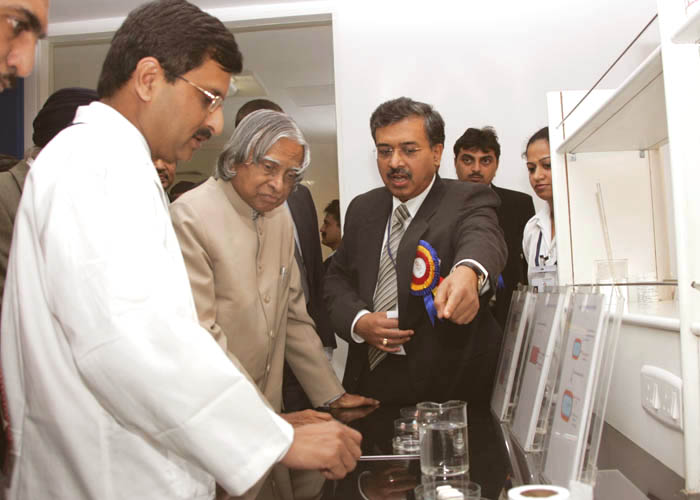

WTO Regime
On January 1st, 2005, the Indian pharmaceutical industry will face a challenge of demanding indigenous design of drugs, which will have a profound impact on global competitiveness and business viability. As India comes into compliance with the TRIPS protocol mandated by the WTO, a new IPR regime will be enacted that will extend patent protection to new product inventions. The new product patent regime will affect a sea change in the way Indian pharmaceutical companies think and do business. I hope that, SPARC will enable Sun Pharma Industries to meet this challenge.

The science of proteomics and gene chip
India missed the great opportunity in partnering the human genome project and thereby lost the utility of tremendous data. I suggest the Indian biomedical community to take the initiative to become a working partner in the proteomics project of gene characterization. Proteomics is the study of all the proteins expressed by the genome of a cell. It is the logical extension of genomics. Proteomics helps to understand the basic biological processes critical to normal cellular functions as well as the development of diseases. It identifies the essential components of these processes and exploits these components as targets in the development of new methods to prevent or treat diseases. The national programme on proteomics has to be accelerated with partnership from industries and R & D laboratories. I would suggest that this should be pursued as a mission mode project. The proteomics resulting into a gene chip can become the future diagnosis and treatment regime for many diseases. This will be of interest SPARC scientists.

Information Technology
Information Technology has become very relevant to areas like pharmaceutical research because of the enormous amount of data which has to be mined and analyzed to arrive at definite conclusions. The results of proteomics programme will unravel the genomic mystery leading to the bio-medical community to create a new evolutionary future for the human race. The amount of data processing required is so huge and specialized, that the new branch of 'bio-informatics' has emerged. As the volume of data generated grows, so does the demand for faster data processing technologies. Thus, to arrive at some destination in the area of 'bio-informatics', it is very necessary to deploy powerful information and communication technologies so as to be able to get a hold on gene sequences, expressions, protein structure delineation and population genetics etc. We have Biotechnology and Information Technology. When they converge, we get Bio-informatics and the important science of proteomics emerged has revolutionized the drug design. Now with the emergence of Nano-technology, we have an excellent opportunity to be a global leader in the development of drug delivery systems and medical diagnostics.
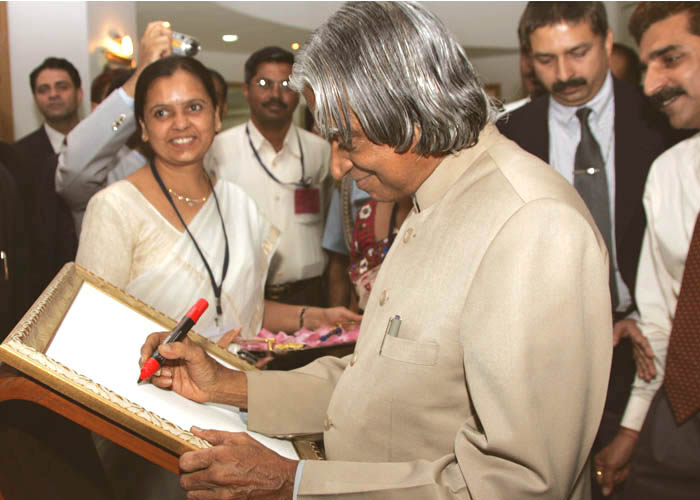

Computational biology and drug design
During my recent visit to Hyderabad, I launched the Bio-Suite which is a state-of-the-art software package that caters to all aspects of computational biology from genomics to structure-based drug design. It incorporates the latest publicly known algorithms, as chosen by a panel of academic partners, and has been coded entirely by the TCS team, using the best software engineering practices. It can be used by academic and R&D institutions, small/medium and large biotechnology companies. I would suggest the researchers of this Center to examine the possibility of using this bio-suite developed by TCS in collaboration with CSIR and academic institutions, for cost effective drug development.

Nano-bio technologies
Now we believe that Nanotechnology is the new technology that is knocking at our doors which has wider applications. It will be the central focus for many technologies to converge and open a large number of applications. Further, this technology will have a large domestic market potential leading to a robust economy. Nano-bio medical sensors will play a major role in glucose detection and endoscopic implants. Nano-technology application to drug delivery system will revolutionize the health-care to a large extent which can be studied by the scientists of this new research Centre.
The world market in 2004 for nano materials, nano tools, nano devices and nano biotechnology put together is expected to be over hundred billion dollars. It has been noticed that the fastest growing area among these is nano-biotechnology. Next ten years will see nano technology playing the most dominant role in the global business environment and is expected to go beyond the billion dollar estimates and cross the figure of 1 trillion.

Nano-bio chip
Recently I met Prof. Vijay K Varadan of Pennsylvania State University, US. He shared his experience on the possible line of treatment for Parkinsons disease and Epilepsy. The primary symptoms in Parkinson?s Disease, as you all are aware, are tremor or trembling in hands, arms, legs, jaw and face, rigidity or stiffness of the limbs, slowness of movement and impaired balance. Prof Varadan has devised a wireless system for monitoring and control of Parkinson disease. The system consists of an implantable nano-bio chip in the head region for generating a pulse to the nerve system; controlled either by a modified pacemaker or smart hat. Passive polymer based gyro sensor, is implanted in the tremor location. The sensor gets power from the Pacemaker and the Pacemaker then reads the tremor motion. The Pacemaker then generates pulse in the implanted device in the head to control the tremor. This appears to be a promising line of treatment for such diseases. Prof. Varadan also has reported that a few patients affected by Parkinson disease had a full recovery. This is the promising area of research in which some of the researchers of this Centre can concentrate.

Intellectual Property Rights (IPR)
We are now fast moving into the world of Intellectual Property Rights. Patents under the new international regimes are unfolding before us. To make sure that we do not lose out to any of the IPR issues, it will be necessary to document properly all our research work and to put in our claims for patents at the right time. Sun Pharma Research Centre in collaboration with NIPER, certain CSIR Labs and other national laboratories, should become the repository of IPR related activities not only to ensure that we protect our Intellectual Property of the modern times, but also to ensure that our repository of traditional medicinal knowledge is properly documented and can be put to strategic use to prevent IPR piracy. I believe that it is important for Indian business to capture the IPRs generated in India in order to realize the full benefit in the competitive global commerce.
India is the only country that has got the treasure of clinical data because of its billion population and plurality. This is a great advantage for India?s development for drug and drug delivery system. As you will be knowing, CII study has revealed that the drug development cost is one tenth compared to international market.

Traditional health care: Experiences
I would like to share my experiences while I was in Anna University, Chennai. One of them resulted in getting a patent for a new molecule discovered from a herb as an anti cancer drug. This came out of the fusion of two great minds, one was a bio technologist and the other was a traditional siddha medical practitioner. The traditional system of medicine like Ayurveda, Siddha etc., have advocated and practiced preventive and curative medicinal recipes specific to individuals. The body, mind, food and environment were looked at holistically to suggest a preventive or curative approach to health. Medicinal plants offer enormous scope for development of drugs. We need to create database of traditional medicinal plants for specific bioactivity and lead for development of new drugs. India has got tremendous opportunities for herbal farming and research. Sun Pharma Research Centre can collaborate with CCMB, Hyderabad and Centre for Liver Research and Diagnosis, Hyderabad for realizing the special cost effective drug particularly in gastroenterology.

Evolution of research philosophy
As you all know that Johns Hopkins University in USA is doing a pioneering research work in medical field. I met Dr. Charles Cummings of the Johns Hopkins Board and his team, few days ago. I asked one question that was in my mind, to Dr Charles, ?What made Johns Hopkins a world class medical research centre in addition to its cherishing societal missions?? His answer was, ?it is a great tradition, it started with a number of visionaries with value system and missions. This tradition continues.?
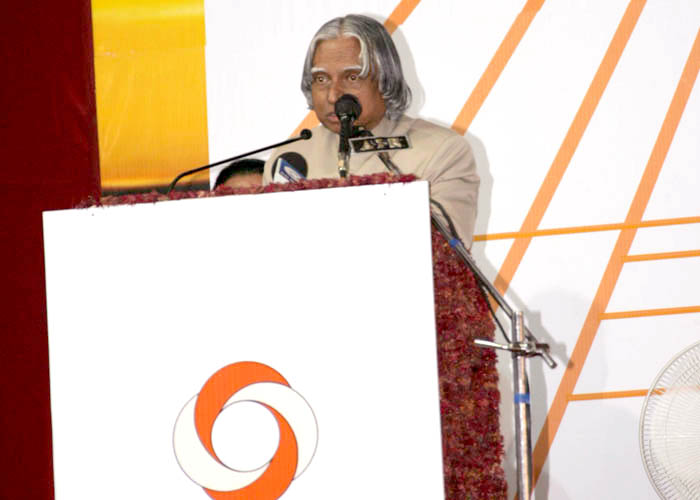

Conclusion
The research and drug design, development and acceptance for introduction is a big mission. Molecule to drug is indeed the business of strong minds with the capacity to take calculated risks. In this connection, I recall the principle taught by my Guru Prof Satish Dhawan, ?If one takes challenging tasks, problems will always occur. But problems should not become masters of the doers. Instead the problem has to be defeated and we should succeed.? I am sure SPARC scientists and members of Sun Pharma will have an indomitable spirit to encounter problems and succeed in its innovation, business and marketing.
Eradication of liver diseases, controlling cardiovascular diseases, preventing spread of HIV by developing anti HIV vaccine, controlling allergy and inflammatory disorders by multiple technologies and practices and creation of competitive Pharma businesses - all need one important element, apart from other resources. That is creative leadership in health care. Who are the creative leaders? What are the qualities of a creative leader? The creative leadership is exercising the task to change the traditional role from commander to coach, from manager to mentor, from director to delegator and from one who demands respect to one who facilitates self respect. Higher the proportion of creative leaders with vision in the health care area, higher the potential for successes in research and discovery of healthcare products, leading towards a healthy and wealthy India.
While inaugurating the new Research Centre of Sun Pharmaceutical Industries Ltd. I wish you all success in your missions.
May God Bless You.
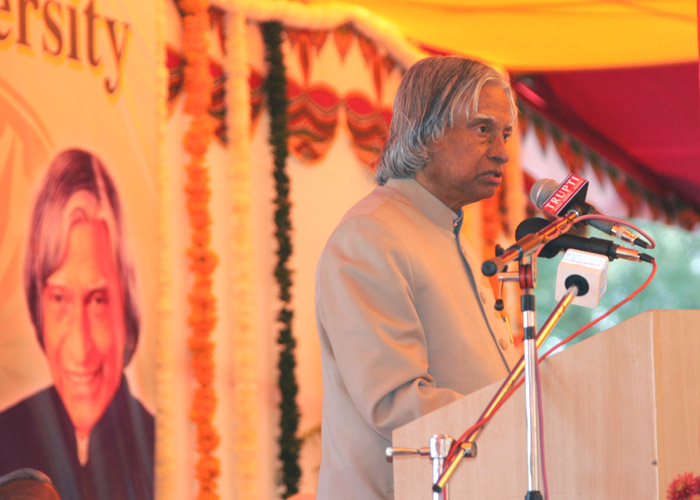
<<Back
|
|